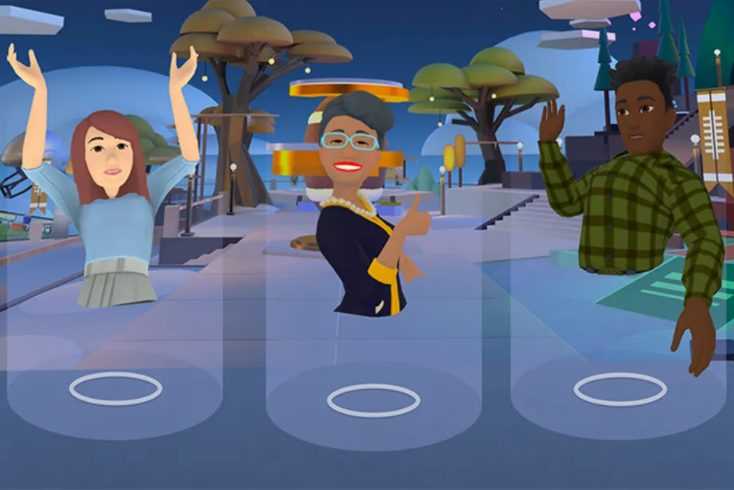Meta Adds ‘Personal Boundary’ to VR Avatars in Horizon
Meta is introducing a “personal boundary” system to the Horizon virtual reality experiences to put a stop to harassment in virtual reality. This is in response to an earlier report by a woman who had been ‘groped’ during the Horizon beta test, an incident that was widely covered in major news outlets and raised concerns about the risk of sexual harassment and abuse in the emerging metaverse.

The new personal boundary feature is turned on by default in the Horizon Worlds creation platform as well as the Horizon Venues live event service. The boundary builds an invisible virtual barrier around the avatars that keeps others from coming too close. However, the boundary still allows you to stretch out your arms and give a high five or fist-bump to someone.
The boundary system adds to an existing feature that can make the hands of users disappear if they come too close to another avatar. According to Meta, the boundary affords everyone a two-foot radius of virtual personal space. This is equivalent to four virtual feet between the avatars.
Meta spokesperson Kristina Milian stated that the feature does not provide users with the option to disable the personal boundary system as it has been created to establish the norms of how users interact with one another in virtual reality. The company, however, states that future changes could enable users to customize the size of the radius of the personal boundary.
In case another user is trying to teleport or walk inside your personal space, their forward movement will stop. However, it is still possible to move past an avatar so it won’t be possible for people to use their bubbles to trap others or block entrances in the virtual space.
These new changes have arrived just two months after the rollout of Horizon Worlds to the public following an extended beta testing. During the beta testing period, a user had complained of their avatar being groped by a stranger in virtual space. The user eventually engaged the block feature on her harasser. However, Meta stated that the user hadn’t employed the full range of options available to her to tackle virtual harassment. Meta had also said that it wanted to make the protection features such as the block button “trivially easy and findable.”
Such personal space bubbles are already standard in other social VR spaces such as Rec Room and VRChat and in these platforms, users also have the option of turning them off or changing their sizes.
Games such as QuiVR, where reports of VR sexual harassment first came out, introduced custom gestures that enable users to “push” away virtual avatars.
https://virtualrealitytimes.com/2022/02/06/meta-adds-personal-boundary-to-vr-avatars-in-horizon/https://virtualrealitytimes.com/wp-content/uploads/2022/02/Horizon-Personal-Boundary-600x401.pnghttps://virtualrealitytimes.com/wp-content/uploads/2022/02/Horizon-Personal-Boundary-150x90.pngTechnologyMeta is introducing a “personal boundary” system to the Horizon virtual reality experiences to put a stop to harassment in virtual reality. This is in response to an earlier report by a woman who had been ‘groped’ during the Horizon beta test, an incident that was widely covered in...Sam OchanjiSam Ochanji[email protected]EditorVirtual Reality Times - Metaverse & VR
